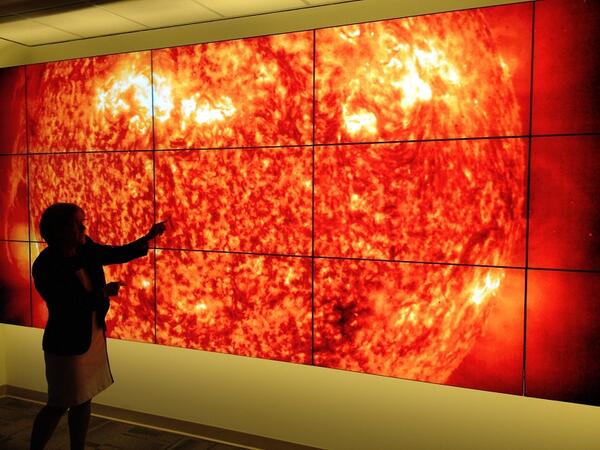From DSC:
You want to see some incredible animation? Check out the piece “What’s Inside of the Statue of Liberty?“ by Jared Owen. His video channel on YouTube is located here.
60 Cool Home Offices and Workstations Setup, Vol. 4 — fromhongkiat.com
Watch a Drone Swarm Fly Through a Fake Forest Without Crashing — from wired.com by Max Levy
Each copter doesn’t just track where the others are. It constantly predicts where they’ll go.
From DSC:
I’m not too crazy about this drone swarm…in fact, the more I thought about it, I find it quite alarming and nerve-racking. It doesn’t take much imagination to think what the militaries of the world are already doing with this kind of thing. And our son is now in the Marines. So forgive me if I’m a bit biased here…but I can’t help but wondering what the role/impact of foot soldiers will be in the next war? I hope we don’t have one.
Anway, just because we can…
Walmart is pulling plug on more robots — from wsj.com by Sarah Nassauer
Retailer has been phasing out automated pickup towers as curbside services have become popular
Excerpt:
At Walmart Inc., the robots are losing their jobs.
The retailer is phasing out the hulking automated pickup towers that were erected in more than 1,500 stores to dispense online orders. The decision reflects a growing focus on curbside pickup services that have become more popular during the Covid-19 pandemic and continues a broader retreat from some initiatives to use highly visible automation in stores.
The World’s Most Powerful Tidal Turbine Is Almost Complete — from interestingengineering.com by Christopher McFadden
Allegedly the world’s most powerful turbine, the O2 is almost complete.
Excerpt:
Once operational, the turbine will kick out nearly 2 megawatts of power. That is enough to power at least 2,000 homes in the UK every year. The turbine will be connected to the European Marine Energy Centre off the Orkney Islands.
Genesis Breaks World Record by Flying 3,281 Drones Over Shanghai — from interestingengineering.com by Fabienne Lang
The impressive stunt now holds the record of Most Unmanned Aerial Vehicles (UAVs) Airborne Simultaneously in the Guinness World Record book.
16 Historical Roman Inventions That Helped Shape the Modern World — from interestingengineering.com by Kashyap Vyas
The technologically-advanced ancient Roman Empire has a rich history of inventions, some of which are still used today.
Frank Gehry reveals latest design for supertall skyscraper in Toronto — from dezeen.com by India Block
Excerpt:
Frank Gehry has released visuals of a pair of twisting shiny skyscrapers, one of which will be over 300 metres, for King Street West in Toronto.
Currently named the Gehry Project, the plan is to build a 289-metre-high supertall and a 262-metre-high skyscraper at the intersection King Street West and Ed Mirvish Way.
Also see:
Richard Rogers balances his final building over Provence vineyard — from dezeen.com


























